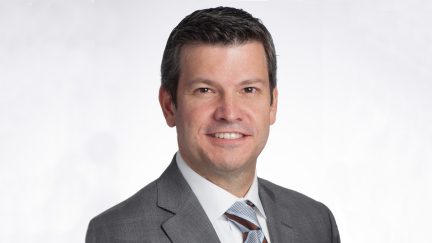Get more! Sign up for PLANSPONSOR newsletters.
How to Talk Through Volatility with Plan Participants
As the markets have been strong for the past 10 years since the Great Recession of 2008, it is important for retirement plan advisers to remind investors that volatility could return and to help them prepare for it, experts say.
“At some point we are going to experience market volatility, which is why it is important to educate investors how their portfolio may perform both on the upside and the downside,” says David Brinkman, investment relationship manager with Schneider Downs Wealth Management in Columbus, Ohio. “This can help clients ride out volatility.”
Addressing an investor’s risk tolerate right at the beginning of the relationship with a retirement plan adviser is also key, says Darlene Dailey, vice president of business development at IPX in Dallas. With this information in hand, the adviser should then create a formal, written financial plan, Dailey says. Then, in subsequent meetings, the adviser should ask the participant if their life situation has changed and make adjustments to the portfolio accordingly.
“If the participant is worried about market volatility and their concerns are being driven by media frenzy, rather than a change in their financial plan, walk them through what is happening in the marketplace to allay those fears,” Dailey says.
It is also important to keep participants’ eyes on the longer term, says Frank Pape, director of consulting services at Russell Investments in Seattle. “If participants are experiencing volatility, remind them that this is part of investing,” Pape says.
For example, Russell Investments notes in a blog post, “Over the past 92 years, there have been 33 bull and bear market cycles, with the average bear market seeing a 31% decline, in contrast to the average bull market increasing by 175%. What’s more, the average bear market has been 15 months in duration, while the average bull market has sustained for almost 51 months. So, although exiting the market might feel like the right thing to do when volatility increased and a bear market ensues, history demonstrates this approach typically has not paid off over the long run.”
Jeff Acheson, divisional president at Independent Financial Partners in Tampa, Florida, agrees that stressing the benefits of long-term investing is, perhaps, a retirement plan adviser’s most important role. “From an adviser’s standpoint, they have to constantly educate and raise awareness among participants to think about the long haul,” Acheson says. “The only person who gets hurt on a rollercoaster is the one who jumps out. Advisers should stress that volatility is the price you pay for good performance.”
For younger investors with a long time horizon, they can even take advantage of market volatility by purchasing shares at a cheaper price, notes Dan Keady, chief financial planning strategist at TIAA in New York.
In addition, Russell Investments recommends that participants invest in strategies that provide both potential upside and downside protection, Pape says. This is why the firm recommends a global multi-asset allocation approach, he says. “Being diversified is the best way to get through a volatile market,” he says. “Being more defensive on the front end leads to better performance than to follow the market and try to recover after a recession.”
To this point about being diversified, Unified Trust Company, in Lexington, Kentucky, highlights the industry’s success of getting more participants invested in managed accounts and model portfolios.
“We provide clients with a projection of their retirement income every quarter to see if they are on track,” says Diana Jordan, senior retirement plan consultant at the firm. “We have a long-term focus explaining to participants the importance of asset allocation and concentrating on their projected income in retirement. By having so many participants in managed accounts and model portfolios, this goes some way to take the issue of market volatility off the table.”
For those investors closer to retirement, TIAA recommends that “they have a plan to rebalance their portfolios to keep their investment risk in check,” Keady says. “If the portion of their portfolio in equities rose from 60% to 80% because of market growth, they need to readjust that with an asset allocation seatbelt.”
A second recommendation TIAA makes for those approaching retirement is to consider investing a portion of their assets in guaranteed income to cover basic living expenses, Keady says.
“As you get closer to retirement, market volatility is no longer an abstract but concrete. If the dollars in your portfolio have fallen to 50 cents and you are withdrawing money, you are making those losses real. We always talk about Social Security as the starting point of guaranteed income but explore what investors can do beyond that. If you are pulling money out from your accounts in a bear market, that could easily deplete your accounts over time, but if you have bought a guaranteed income annuity, you can better weather the storm.”
Tom Foster, national spokesperson for workplace solutions at MassMutual in Enfield, Connecticut, agrees that it is important for retirement plan participants to own investment accounts outside their 401(k) plan, such as life insurance, annuities or an individual retirement account (IRA). “With those additional assets, you can be more aggressive,” Foster says.


